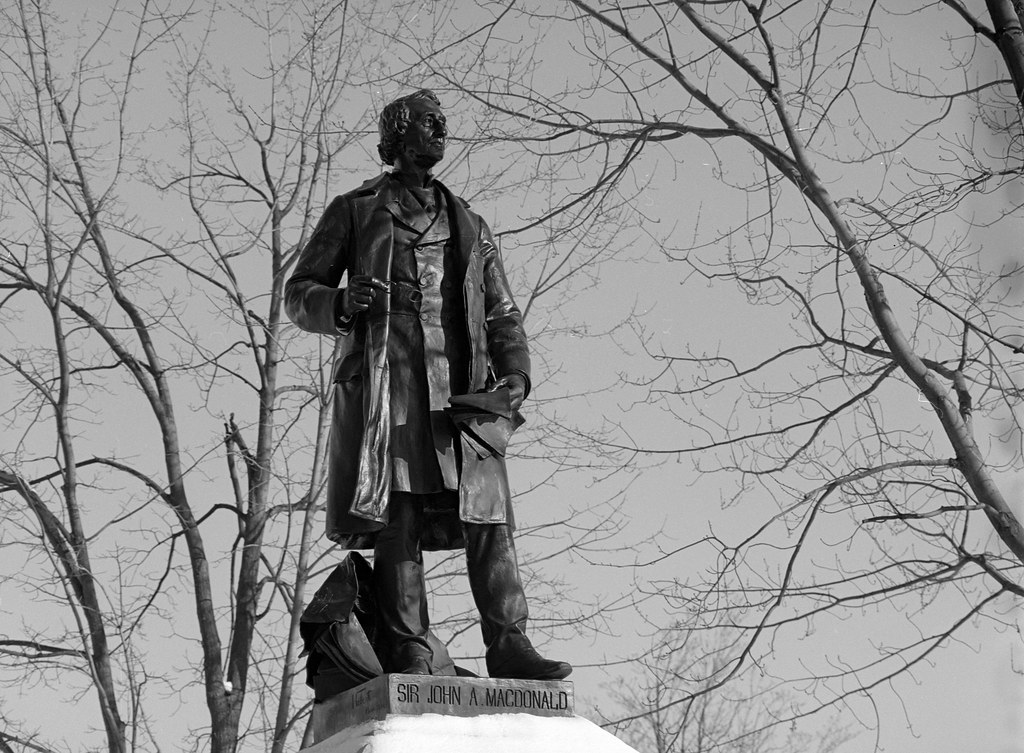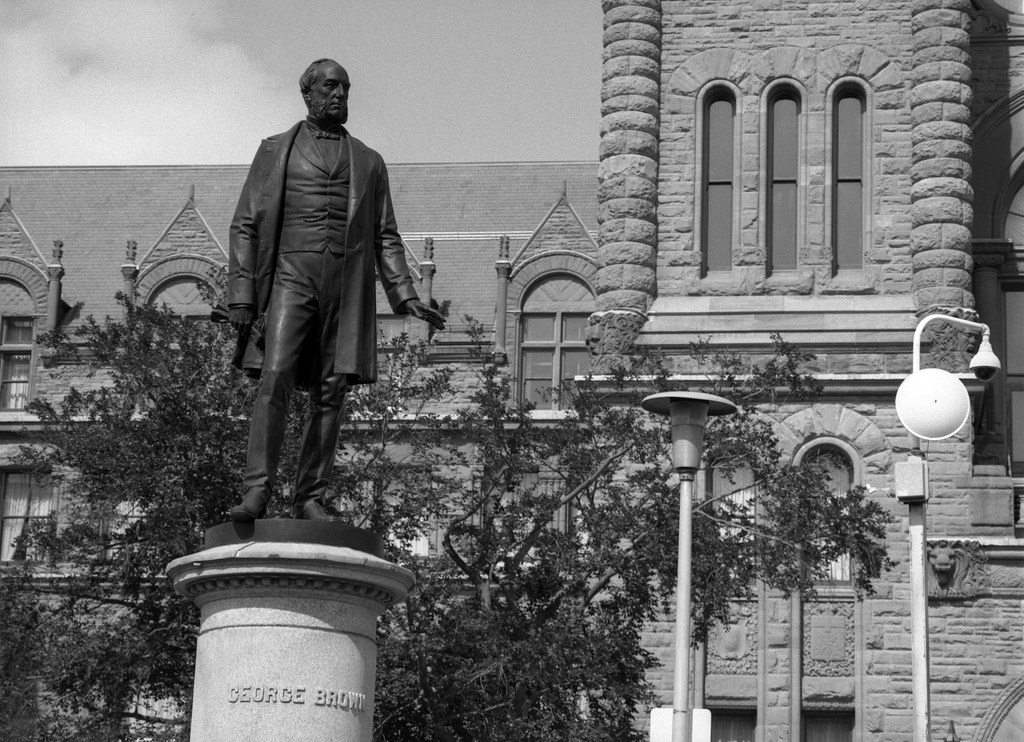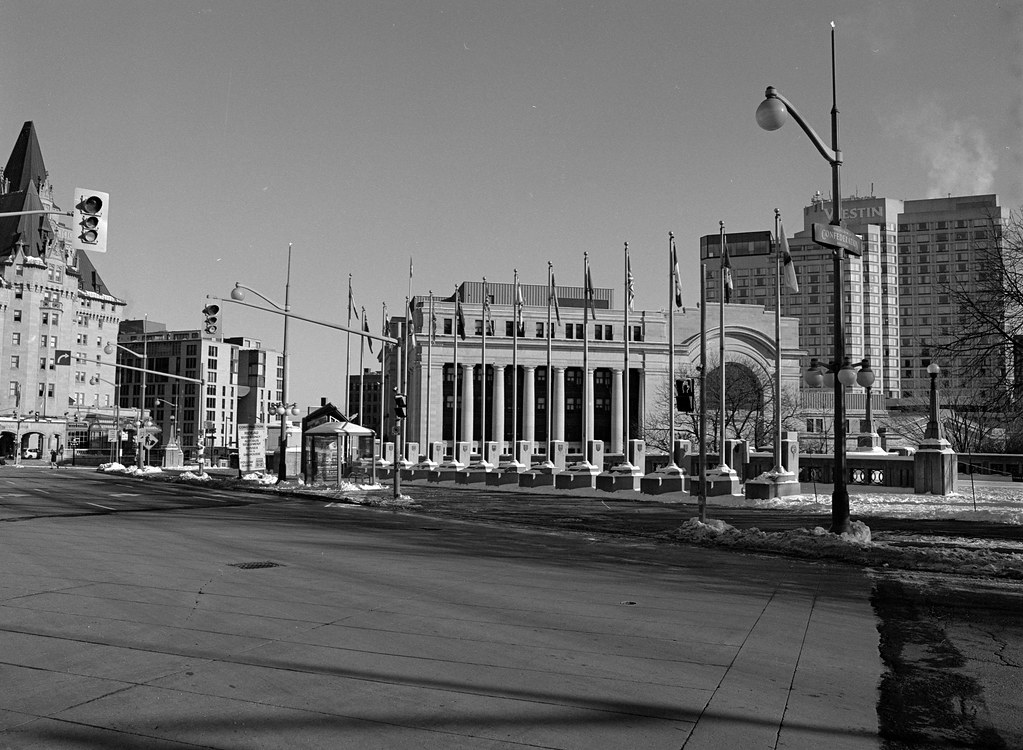There is a great deal of wisdom in the preamble of the Constitution of the United States of America; I am talking about the line of text that reads, in order to form a more perfect union. The 1850s had been rough on the state of the Canadian government, and as the decade turned, it looked like it was not going to be getting any better. The scandals that rocked the governments of Sir Francis Hincks and Sir Allan Napier MacNab had damaged the reputation of the Liberal-Conservatives and even trickled down into the Reform movement as well. But things looked a little better when a young Kingston Lawyer and long-time assembly member John Alexander MacDonald took over as Premier and head of the Liberal-Conservatives. And while the idea of the democratic process worked, it only worked in a unified assembly. The trouble lay in the Canadian Consitution, that is the 1840 Act of Union. The document required a double majority, for a bill to be moved forward it had to achieve a majority vote in favour from both representatives from Canada East and Canada West. I know it sounds absurd, but that’s just how it worked. And when you had a unified assembly, it did, however, under Hinck and MacNab the meeting cracked, and members no longer were working together as well as they did in the past.

Mamiya m645 – Mamiya-Sekor C 150mm 1:3.5 N – Ilford HP5+ @ ASA-200 – Pyrocat-HD (1+1+100) 9:00 @ 20C
The lack of unity meant more often than not; governments were falling as quickly as they were elected. The Liberal-Conservatives lost confidence, and the government fell on the 2nd of August 1858. Much to everyone’s surprise the Clear Grits and Parti Rouge took the election, and George Brown would be appointed as Premiere in Canada West. However, the radical reformers failed to form a government by failing to have enough people to fill the executive. They lasted all of four days before falling in a confidence vote. The Liberal-Conservatives and Parti Bleu returned to power in the next election. The passage of the 1862 Militia Act again sent the voters to an election, this time returning a mainline reform government under John Sandfield MacDonald (no relation to John A.). Sandfield proved an able if no forgettable leader, holding onto power for two years, then falling and returning the Liberal-Conservatives. The rapid changes in government left everyone worn thin. And there would be the fear that if the cycle was not broken, they might find the colonial office knocking on the door and dismissing the responsible government in Canada a failed experiment. And while John A. MacDonald had fought against it in the past, quickly learned to accept the model. But he also knew that something needed to be done about it, and it had to be a bi-partisan affair. MacDonald and his fellow premiere, George-Étienne Cartier from Canada East organised a parliamentary committee to explore how to prevent future deadlocks, heading up the committee would be George Brown. The solution had been staring them in the face; a more comprehensive union would bring about a more even distribution of power and having a single assembly without the need of a double majority could easily have resolved all their issues. The idea had been in the first draft of the Durham Report in 1838, a Canada East assembly member; Joseph Tache wrote a series of articles on such a union in 1857. And even in 1859 a group of Canadians had visited London to present the idea to the Colonial Office and were promptly shot down with polite indifference. But when the government faced another deadlock in 1864, MacDonald, Cartier and Brown knew that they had to act fast. Brown agreed to join with the Liberal-Conservatives and Parti Bleu and bring the Clear Grits with and shored up the votes needed. But Brown’s alliance had a price; they needed to act on a wider union. Brown knew just where to look, a meeting that would be taking place in Charlottetown on Prince Edward Island.

Mamiya m645 – Mamiya-Sekor C 150mm 1:3.5 N – Ilford FP4+ @ ASA-125 – Blazinal (1+25) 9:00 @ 20C
And while it was political deadlock that drove the Canadians to seek a greater union, other forces were moving around the world that started to change minds in London about the idea of Union. Within England, a group of citizens were beginning to question to Empire on which the sun never set. The colonies to many were nothing more than a tax burden. They paid taxes to help colonial governments and their men to defend these far off lands that returned very little. These “Little Englanders” felt that time to dissolve the empire was close at hand, and began to make their feelings known to Parliament. The wealthy business owners were also ready to cut ties, and many of their investments in Canadian railroads weren’t paying off as much as they had hoped, Grand Trunk and Great Western weren’t turning the profits, they too were clamouring for cutting ties. And then there was the question of the United States, during the Civil War Canada found itself nearly on the front line of a second Anglo-American War in 1861 during the Trent Affair and many American politicians were ready to accept Canada as payment for damages caused by British built ships, such as the CSS Alabama. And the repeal of the 1854 reciprocity treaty had hurt trade with the return of high tariffs. Not to mention the invasion of the Fenian Brotherhood had inspired a renewed sense of nationalism among Canadians. The Canadians were also beginning to stand on their own when it came to the local economy, with more manufacturing being completed in urban centres. Hamilton had a booming steel industry thanks to Great Western Railway and Toronto had a strong industrial sector.

Mamiya m645 – Mamiya-Sekor C 150mm 1:3.5 N – Ilford FP4+ @ ASA-125 – Blazinal (1+25) 9:00 @ 20C
The real question would be if all these factors would move the colonial office to accept the idea of a wider union. They were fairly keen on the union of the Maritime Provinces, and Brown, Cartier, and MacDonald all approached the Governor-General, Sir Charles Monck asking if he could contact the governments of the maritime provinces in requesting if the Canadians could join and that the Colonial Office would approve. The Maritimes were open to the idea, and the Colonial Office agreed to any well-conceived plan that did not interfere with Imperial interests. We, of course, know what ultimately happened, that being the creation of Canada. However, the process would not be easy, and several events would see everything put in danger, but those will come.

Mamiya m645 – Mamiya-Sekor C 45mm 1:2.8 N – Ilford HP5+ @ ASA-200 – Pyrocat-HD (1+1+100) 9:00 @ 20C
Today history remembers men like MacDonald, Cartier, and Brown as part of the Fathers of Confederation. And while MacDonald and Cartier would receive wider acclaim, Brown would not serve in the government of Canada after Confederation. He is better remembered as the founder of the Toronto Globe, which today is known as the Globe & Mail after a merger in 1936 with The Mail & Empire. You can find a statue of George Brown on the grounds of the Ontario Legislature (Queen’s Park). John Sandfield MacDonald would begin as being opposed to a union but would be turned around; today he is better remembered as Ontario’s first Premiere following Confederation in 1867, he also has a statue at the Ontario Legislature. But the greatest lesson that we can again takeaway is that Canadians always work better when we work together, putting aside petty and party differences, embracing diversity and different views. Change lies in moderate views, taking both the liberal and conservative viewpoints. Diversity should be a force for good, to bring people together, not drive us apart.